 |
|
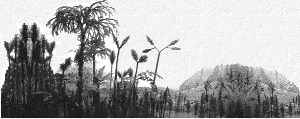 |
 |
Beck, C.B. (Editor) (1988): Origin and
evolution
of gymnosperms. Columbia University Press, New York. xiv + 504 pp. ISBN
0-231-06358-X.
This book with contributions by recognized specialists in their field gives an excellent overview over gymnosperm development ranging from Devonian progymnosperms to the origin of modern conifer families. Unfortunately, the plates are rather small and the photographs sometimes a little bit greyish. |
 |
Behrensmeyer, A.K., Damuth, J.D., DiMichele,
W.A., Potts, R, Sues, H.-D. & Wing, S.L. (1992): Terrestrial ecosystems
through time - Evolutionary paleoecology of terrestrial plants and animals.
The University of Chicago Press, Chicago. xix + 586 pp. ISBN
0-226-04155-7.
Although this is not specifically a palaeobotanical text book it deserves to be mentioned here. The book is derived from the Evolution of Terrestrial Ecosystems conference held in 1987 and it includes a number of excellent contributions on the development and ecology of terrestrial ecosystems through time. Each chapter is written by a group of specialists including well-known palaeobotanists. This book has only very few illustrations. Basic palaeobotanical knowledge is required! |
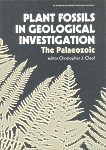 |
Cleal, C.J. (Editor) (1991): Plant fossils
in geological investigation - the Palaeozoic. Ellis Horwood, Chicester.
233 pp. ISBN 0-13-690877-8.
A book on Palaeozoic floras which gives much attention to biostratigraphy, palaeoecology and phytogeography, topics that are usually not so extensively treated in other text books. The book consists of seven chapters written by well-known British specialists. The book is illustrated with a number good quality line drawings. The few half tones are unfortunately rather poorly reproduced and not very useful. |
 |
Cleal, C.J. & Thomas, B.A. (1994): Plant
fossils of the British Coal Measures. Palaeontological Association Field
Guides to Fossils: Number 6. The Palaeontological Association, London.
222 pp. ISBN 0-907702-53-6
An illustrated guide to Carboniferous plant compression fossils with identification keys for the most common taxa. This attractive and very reasonably priced book is illustrated with numerous line drawings and excellent quality half tones. This book is certainly a good starting point for those who want to identify their Carboniferous plant fossils. The richly illustrated book 'Die Floren des Erdaltertums' by Remy & Remy (1977) forms a good addition to this guide. |
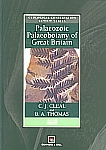 |
Cleal, C.J. & Thomas, B.A. (1995):
Palaeozoic
palaeobotany of Great Britain. Geological Conservation Review Series.
Chapman
& Hall, London. 295 pp. ISBN 0-412-61090-6
Although this is not a real textbook, it should definitely be mentioned here. This book provides an excellent overview of Silurian,Devonian, Carboniferous and Permian fossil plant localities in Great Britain, therewith covering the first 200 million years of the history of lanf plant evolution. Many classical sites are described and therefore this book places British Palaeozoic in an international context. An excellent documentation of the long and still ongoing tradition of Palaeozoic palaeobotany in the United Kingdom.. |
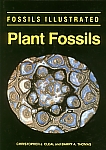 |
Cleal, C.J. & Thomas, B.A. (1999): Fossils
illustrated:
Plant fossils. The Boydell Press, Woodbridge. 188 pp. + 128 pl. ISBN 0
85115 684 3 (hard cover)
A more popular introduction to palaeobotany consisting of an easily readable text with a large number of black-and-white photographic plates. Although being generally well written, the text is flawed by too many typing errrors. The choice of illustrated specimens is not always convincing. The quality of the photographs is too often debatable. Unfortunately, the book is rather expensive; there are much cheaper and more attractive texts on the market, also from these authors (see above). |
 |
Friis, E.M., Chaloner, W.G. & Crane, P.R.
(Editors) (1987, reprinted 1992): The origins of angiosperms and their
biological consequences. Cambridge University Press, Cambridge. x + 358
pp. ISBN 0-521-32357-6 (hardback) and ISBN 0-521-31173-X
(paperback).
Most of the contributions to this book were presented at a symposium held during the 3rd International Congress of Systematic and Evolutionary Biology in 1985. The various authors cover a broad spectrum of topics on or related to angiosperm palaeobotany including palaeogeography and palaeoclimate, the evolution of insect pollination and plant animal interactions. This multidisciplinary book is designed primarily for advanced undergraduate and graduate students in ecology, evolutionary biology and palaeobiology. |
 |
Gensel, P.G. & Andrews, H.N. (1984): Plant
life in the Devonian. Praeger, New York. xi + 381 pp. ISBN
0-03-06002-3.
Although this is not the most modern text book dealing with early land plants, it should definitely be mentioned. It is a very well written introduction with much background information on outcrops and illustrated with many line drawings and half tones. Although not longer always up to date, this book is still a must for all those who are interested in early land plants. It is really a pleasure to read and still a very useful reference. The cover of our copy on the picture looks pretty worn; maybe this says enough... |
 |
Jones, T.P & Rowe, N.P. (1999): Fossil
plants and spores - modern techniques. The Geological Society, London.
396 pp. ISBN 1-86239-035-5 (hbk), ISBN 1-86239-041-X
(sbk).
A manual of techniques and practical methods applied in the study of fossil plants. This books contains 60 compact chapters written by an international array of specialists in the field. One group od authors concentrates on practical laboratory techniques and methods, wheras other authors focus on methodological aspects; some papers could even have gone more in detail. Althought this mix of contributions might be somewhat unbalanced, it gives a good introduction into the techniques and methods currently applied in palaeobotany. |
 |
Kenrick, P. & Crane, P.R. (1997): The
origin and early diversification of land plants - A cladistic study.
Smithsonian
Institution Press, Washington. x + 441 pp. ISBN 1-56098-729-4 (paperback)
and ISBN 1-56098-730-8 (cloth).
A recently published rather specialised contribution on early land plants that gives an up-to-date review of the state of the art and presents the first comprehensive review of cladistics to the most basal groups of land plants. The book is well illustrated with many newly drawn reconstructions and some photographs. Knowledge of plant systematics and cladistics is required. |
 |
Meyen, S.V. (1987): Fundamentals of
palaeobotany.
Chapman and Hall, New York. xxi + 432 pp. ISBN
0-412-27220-9.
Only half of this text book is devoted to the traditional systematic treatment of fossil plant groups. The rest deals with the taxonomy of fossil plants, ecology, palaeobiogeography, cuticles and other topics. The author used a sometimes rather different classification of plants. Although not always easy to read it contains a wealth of new information and original ideas. The book contains no photographs but the line drawings which were made by the author are simply superb. |
 |
Niklas, K.J. (1996): The evolutionary biology
of plants. The University of Chicago Press, Chicago. Xi + 449 pp. ISBN
0-226-58082-2 (cloth) and ISBN 0-226-58083-0 (paperback).
This very well written text book follows a completely different approach than all other text books. The author presents an excellent and thought provoking synthesis of palaeobotany, morphology, biomechanics, population and molecular biology and physiology. The book is illustrated with a large number of computer-generated cartoons. This refreshing book is recommended to everyone with a more than minimal interest in fossil plants, however, some basic botanical knowledge is required. |
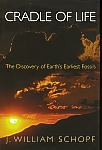 |
Schopf, J.W. (1999): Cradle of life - The discovery of
Earth's earliest fossils. Princeton University Press, Princeton. NJ. ISBN
0-0691-002304-4 (hard cover).
Although not being a palaeobotany book, this very reasonably priced and beautifully produced book should definitely be mentioned here. The author tells the fascinating story of the earliest life on Earth and the major discoveries in this field. This book is very well written and reads like a good novel. The illustrations are superb. It is one of the very few palaeobotany texts that deserve a large readership. An absolute must ! |
 |
Stewart, W.N. and Rothwell, G.W. (1993,
reprinted
1999): Paleobotany and the evolution of plants. Second edition. Cambridge
University Press, Cambridge. xii + 512 pp. ISBN
0-521-38294-7.
This is the 2nd and revised edition of W.N. Stewart's very successful 1981 text book. The authors generally follow a systematical approach. Most of the book deals with anatomically preserved Palaeozoic floras. The book is richly illustrated with numerous line drawings and good quality half tones. Many of the line drawings are really superb, although some of the later added ones do not meet the quality of those of the first edition. The fact that a new edition of this book and even a reprint were necessary is self-explanatory. |
 |
Taylor, D.W. & Hickey, L.J. (Editors)
(1996): Flowering plant origin, evolution and phylogeny. Chapman &
Hall, New York. ix + 403 pp. ISBN 0-412-05341-1.
This book includes contributions to a symposium entitled "The origin, early evolution, and phylogeny of angiosperms" held at the AIBS meeting in Ames, Iowa on August 4, 1993. As usual such a symposium volume covers a wide range of topics; in this case from reticulate venation patterns to molecular phylogenies. |
 |
Taylor, T.N. and Taylor, E.L. (1993): The
biology and evolution of fossil plants. Prentice Hall, Englewood Cliffs.
xxii + 982 pp. ISBN 0-13-651589-4.
Definitely the most complete and most cited palaeobotanical text book of the 1990s. It is a strongly revised and enlarged edition of T.N. Taylor's classical text book 'Paleobotany' (1981). The authors follow a systematical approach. Some of the groups which were treated rather briefly in the 1981 version are here discussed more extensively. The book is richly illustrated with numerous very good quality half tones and line drawings including a number of portraits of famous palaeobotanists. Although a book of nearly 1000 pages can hardly be seen as an introductory text, this book offers the most complete overview of fossil plants currently available. It is definitely the standard reference work. |
 |
Thomas, B.A. & Spicer, R.A. (1987): The
evolution an palaeobiology of land plants. Croom Helm, London. ix + 309
pp. ISBN 0-7099-2476-3.
A well readable and affordable introductory text book. Not every group is discussed in great detail but the book gives a good basic introduction into palaeobotany. Also aspects that are rarely treated in more systematical text books are discussed. Unfortunately the book is rather poorly illustrated with a limited number of line drawings. This book is currently out of print but a new edition has been announced. |
 |
Tidwell, W.D. (1998): Common fossil plants of western
North America. 2nd edition. Smithsonian Institution Press, Washington.
xiii + 299 pp. ISBN 1-56098-783-9 (cloth), ISBN 1-56098-758-8
(paper)
Although this is not a real text book, it definitely needs to be listed here. It gives a very well written and excellently illustrated text. The many drawings are of superb quality, most halftones are good, only few are a little bit greyish whereas the colour pictures are good to excellent. Unfortunately, all photographs are rather small. The book concentrates on plant fossils from the American West, mostly Mesozoic and Cenozoic floras. Although the are treated geographically restricted, this very attractive and very moderately priced book can be warmly recommended. |
 |
White, M.E. (1986): The greening of Gondwana
- the 400 million year story of Australia's plants. Reed, Aquatic Forests.
256 pp. ISBN 0-7301-0154-1. (Also published under the title: The flowering
of Gondwana (1990). Princeton University Press, Princeton. ISBN
0-691-08592-7).
This book that deals with the history of the vegetation of Australia does in fact not belong on this list because it is not a real text book. However, the numerous truly magnificent large format colour photographs are really breath-taking. If one would ask for a book that documents the beauty and splendour of fossil plants, this is definitely the best choice. Originally published in Australia, the first edition was soon sold out and a second edition was printed. The book was also published in the U.S. and translated into French. A real palaeobotanical bestseller! |
| © Forschungsstelle für Paläobotanik, Westfälische Wilhelms-Universität Münster |
March 2000
|